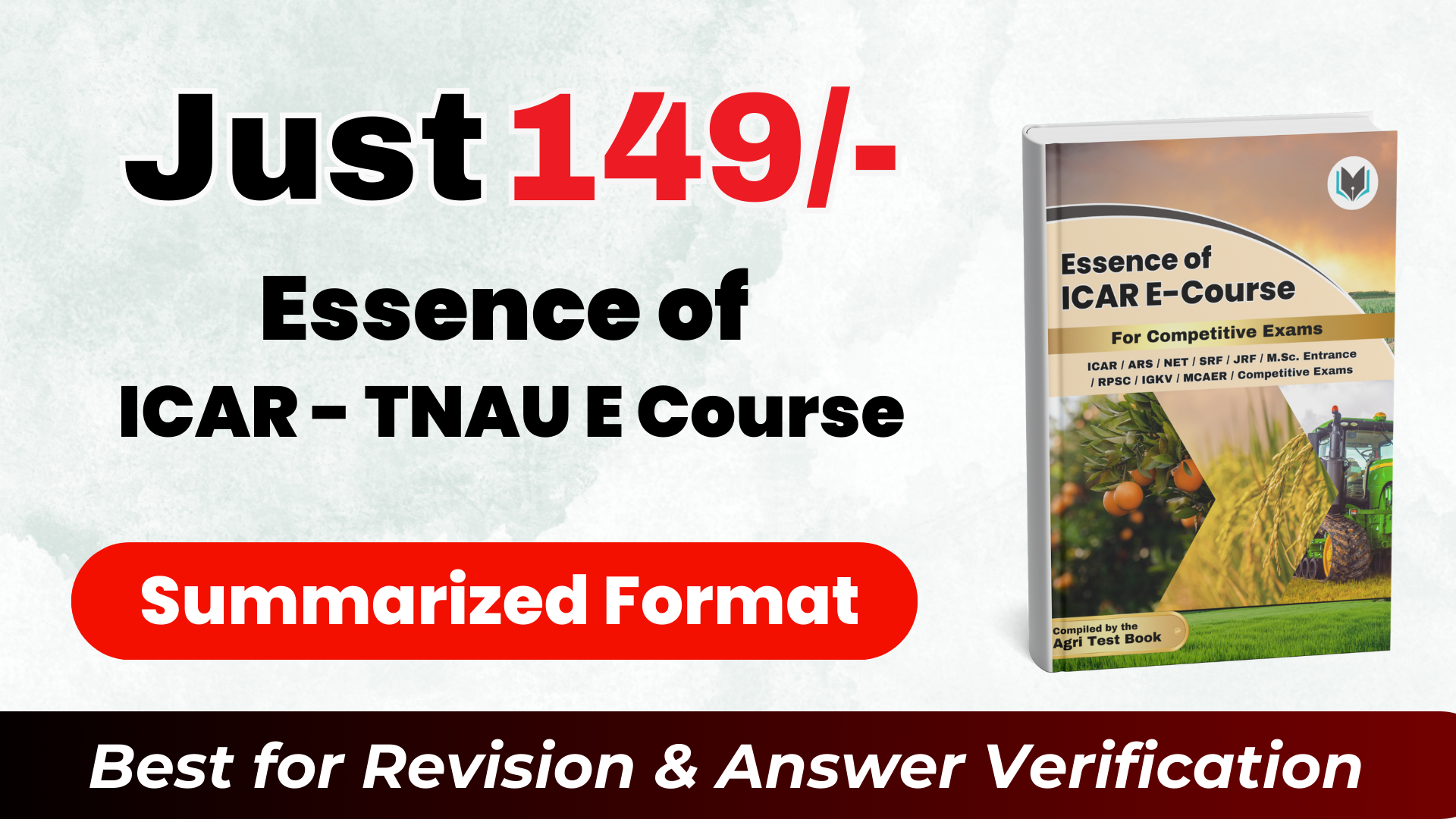Question: Kor watering in irrigation is defined as:
Options:
the first watering which is given to a crop before transplanting
the first watering which is given to a plot when the crop is transplanted
the first watering which is given to seeds sown in the plot for germination
the first watering which is given to a crop when the crop is a few centimetres high
➡️ Kor Watering:
The term Kor Watering refers to the initial watering given to a crop when the plants are still young. It is typically the maximum single watering required when the crop is about 3 centimeters high, with subsequent watering done at regular intervals.
📌 Other Important Definitions:
📝 1. Kor Demand:
Kor demand refers to the maximum water required to grow crops during the entire crop period in a specific crop season.
➖ The design capacity of an irrigation canal generally depends on the water demand or water requirements of a crop season.
📝 2. Kor Period:
The period during which Kor watering is applied is known as the Kor Period.
📝 3. Kor Depth:
The depth of water applied during Kor watering is referred to as the Kor Depth.
📝 4. Mathematical Relationship:
The relationship between Kor Period (B in days), Kor Depth (Δ in m), and Kor Demand (D in ha/m³/s) is expressed as:
D = 8.64 × B / Δ
📝 5. Delta:
The total depth of water required to raise a crop over a unit area of land is called Delta (Δ).
📝 6. Duty of Water:
Duty of water represents the area of land irrigated per unit volume of irrigation water.
➖ Quantitatively: It is defined as the area of land (in hectares) irrigated by 1 cumec of water flowing continuously throughout the base period (in days).






